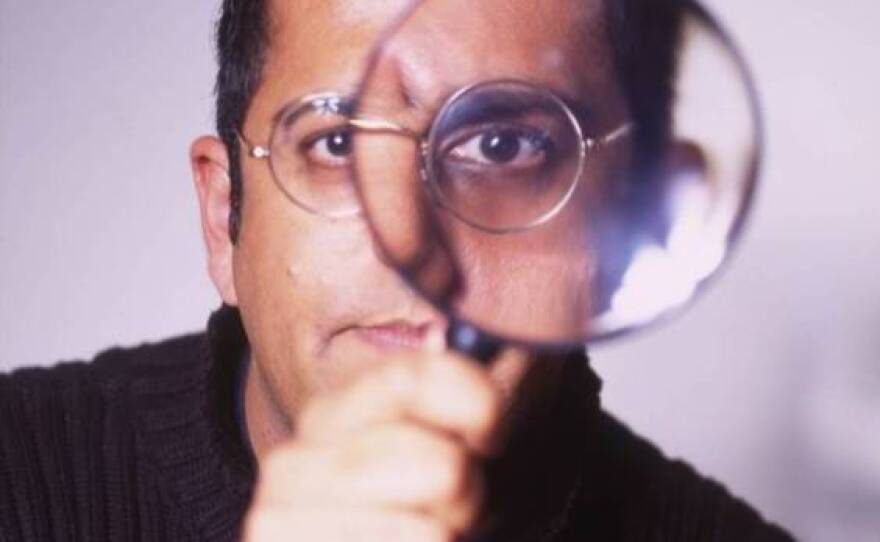
Most people watch The Simpsons to laugh. And, perhaps, feel a little superior to the animated family who are Springfield's best known, if often most dysfunctional citizens.
But Simon Singh, the Cambridge-trained physicist and best-selling author, watches the show not just for laughs, but also for the ... math? In his new book, The Simpsons and Their Mathematical Secrets, he argues that the writers and producers have woven a lot of math into The Simpsons — and into a highly honored show from the same team, Futurama.
Singh is no stranger to math; his first book was about French mathematician Pierre de Fermat's famous unsolved theorem. And the idea of hidden mathematical knowledge encoded in the adventures of Homer and Bart seems far-fetched, but Singh assures NPR's Scott Simon it's true. "I was watching The Simpsons one day, an episode called 'The Wizard of Evergreen Terrace,' and there on a blackboard behind Homer was an equation that directly relates to Fermat's last theorem. And I don't miss things like that."
Interview Highlights
On "Evergreen Terrace" writer David X. Cohen
[He] has written mathematical papers, you know, serious research papers. And then I found out that he's not the only mathematician — there are other writers that have Ph.D.s in maths, one was a Yale professor. And they've all been doing it, they've all been smuggling math into the scenes of The Simpsons.
On why so many mathematicians ended up on The Simpsons
The one that they all seemed to agree on was the fact that mathematicians love logic, but they also love twisting logic, they love bending logic, they love playing with it. And they love occasionally breaking it. And when you break logic, that's where humor appears.
On the importance of the VCR
A lot of [the jokes] are freeze-frame gags, which means you literally have to pause the show to get the reference. You have to remember that when The Simpsons started, around 1989-1990, roughly half of the homes in America had a VCR, so for the first time people could watch episodes again and again, and they could get these freeze-frame gags. The writers said it allowed them to increase the comedic density, because they could get more in. And my suggestion is that it also allows them to increase the nerdic density, because you can get more obscure references in at the same time.
Copyright 2023 NPR. To see more, visit https://www.npr.org. 9(MDAzMjM2NDYzMDEyMzc1Njk5NjAxNzY3OQ001))





